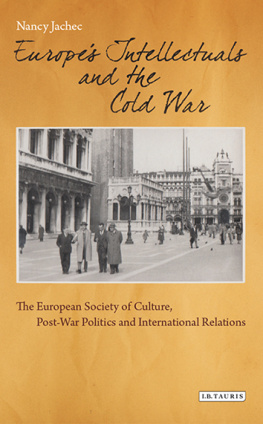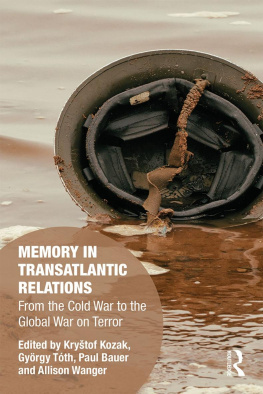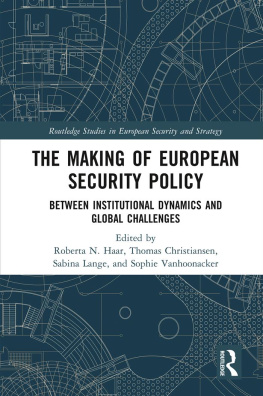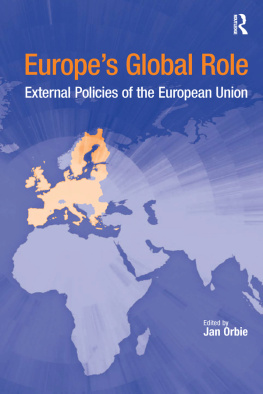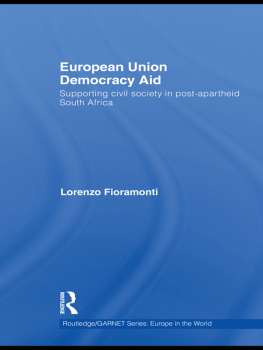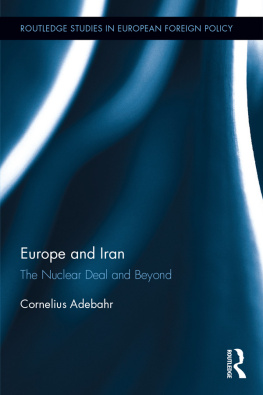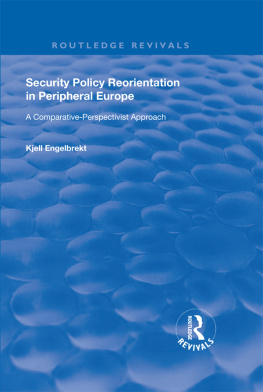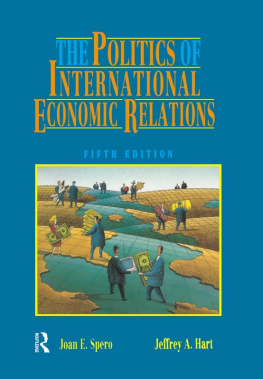Published in 2015 by
I.B.Tauris & Co. Ltd
London New York
www.ibtauris.com
Copyright 2015 Nancy Jachec
The right of Nancy Jachec to be identified as the author of this work has been asserted by the author in accordance with the Copyright, Designs and Patents Act 1988.
All rights reserved. Except for brief quotations in a review, this book, or any part thereof, may not be reproduced, stored in or introduced into a retrieval system, or transmitted, in any form or by any means, electronic, mechanical, photocopying, recording or otherwise, without the prior written permission of the publisher.
Every attempt has been made to gain permission for the use of the images in this book. Any omissions will be rectified in future editions.
References to websites were correct at the time of writing.
International Library of Twentieth Century History 63
ISBN: 978 1 78076 370 5
eISBN: 978 0 85773 842 4
A full CIP record for this book is available from the British Library
A full CIP record is available from the Library of Congress
Library of Congress Catalog Card Number: available
LIST OF PLATES
Frontispiece.Maurice Merleau-Ponty addresses the EastWest Dialogue, Venice 1956. To his left: Anthony Babel and Umberto Campagnolo, founder and general secretary of the Society. To his right: Jarosaw Iwaszkiewicz and Jean-Paul Sartre. Photo: courtesy of the ASEC.
Umberto Campagnolo, the SECs founder and general secretary, at the Parc du Chteau de Coppet, Switzerland, 1958. Photo: courtesy of Matteo and Cosima Campagnolo.
The 1946 RIG Lukcs-Jaspers debate: Georg Lukcs addresses the audience while Karl Jaspers (left) waits for his turn to speak. Listening intently on the far right is Denis de Rougemont. Photographer: David E. Scherman. Photo: Time and Life Pictures/Getty Images.
Campagnolo in conversation with Julien Benda at the 1946 RIG. A famous advocate of European federalism, Benda was a keynote speaker both in Geneva and at the SECs Constitutive Assembly. Photo: ASEC, Venice.
Denis de Rougemont at the 1946 RIG. He founded the CEC and was president of the CCFs European Committee, as well as a member of its International Committee. Photographer: David E. Scherman. Photo: Time and Life Pictures/Getty Images.
The SECs Constitutive Assembly, meeting in the Senate Hall of Venices Ducal Palace, May 1950. In the past, the Republic discussed matters of state here. Photo: ASEC, Venice.
Opening the Constitutive Assembly. Left to right: Henri de Zigler, Angiolo Tursi, General Secretary Umberto Campagnolo, President Giovanni Ponti, Antony Babel, Henri Bdarida and Diego Valeri. Photo: ASEC, Venice.
The Wrocaw Conference, August 1948. Photo: Marx Memorial Library, London.
The CCFs first congress, Berlin, June 1950. Photo: Special Collections Research Center, University of Chicago Library.
Wladimir Weidl, Denis de Rougemont and Roger Caillois at the CCFs counter-communist propaganda meeting in Andlau, September 1951. They discussed, among other things, what to do about the Appeal. Photo: Special Collections Research Center, University of Chicago Library.
The SECs Executive Council, meeting before the Second General Assembly in Venice 1952, where the fallout from the Appeal to the Intellectuals of Europe and the World was discussed. Clockwise from top left: Norberto Bobbio, Diego Valeri, Henri de Zigler, Jean Amrouche, Father Augustin-Jean Maydieu, Jean Lescure, Giuseppe Ungaretti, unidentified, Umberto Apollonio, stenographer, Gabriele Mucchi, Umberto Morra, Bruna Forlati Tamaro, Cecil Sprigge, Bernard Lehmann, Fernand Mueller. Antony Babel, Umberto Campagnolo, Giovanni Ponti and Jean Wahl were also there. Photo: ASEC, Venice.
Umberto Terracini, Arturo Carlo Jemolo and Father Augustin-Jean Maydieu at the Second General Assembly. Terracini was a crucial link between the SEC and intellectuals in Europes socialist countries; Maydieu was a bridge to the Prsence africaine group in Paris. Photo: ASEC, Venice.
SEC members (left to right) Sibilla Aleramo, Franco Antonicelli and Maria Luisa Astaldi between sessions at the Second General Assembly, Venice 1952. Alioune Diop (far right) was still an observer at this point. Photo: ASEC, Venice.
The Bandung Conference, April 1955. Bandung was a reference point both for the First Congress of Black Writers and Artists and for Jean-Paul Sartre at the WPCs World Congress, Helsinki. There he developed his ideas on peaceful coexistence founded not on tolerance, but on active co-operation. Photographer: Howard Sochurek. Photo: Time and Life Pictures/Getty Images.
A typically large WPC congress, Helsinki, June 1955. Photo: World Peace Council, World Assembly for Peace, Helsinki, June 2219, 1955 (Vienna, 1956), plate section II. Every effort has been made to locate the copyright holder.
Queen Elizabeth of the Belgians, the Red Queen, with Campagnolo at the Fifth General Assembly, Brussels, October 1955. Immediately behind them are Pierre Vermeylen, Belgiums socialist Minister of the Interior and Giovanni Ponti (middle). Further back, in conversation with a young woman, is Pablo Casals. Photo: ASEC, Venice.
The EastWest Dialogue, March 1956, at the hotel Luna Baglioni, Venice. Clockwise from centre, top: Giovanni Ponti, Umberto Campagnolo, Ignazio Silone, Marko Risti, Konstantin Fedin, Irina Dollar (interpreter), Boris Polevoi, Mikhail Alpatov, J. D. Bernal, Vercors, Giuseppe Ungaretti, Jacques Havet, Guido Piovene, Alan Pryce-Jones, Stephen Spender (just outside the picture), Jean-Paul Sartre, Jarosaw Iwaszkiewicz, Maurice Merleau-Ponty, Carlo Levi, and Antony Babel. The empty chair was for Karl Barth, who came late to the meetings. Photo: ASEC, Venice.
Jarosaw Iwaszkiewicz, a staunch internationalist whose participation in events like the Dialogue kept him abreast of developments in western thinking. His literary monthly Twrczo published Sartres critique of Soviet-style Marxism shortly after the suppression of the Hungarian Uprising. Here he opens the Wrocaw conference with a speech on the need for global solidarity among intellectuals. Photo: Marx Memorial Library, London.
Between sessions at the Dialogue: in the centre of the picture are Campagnolo, Silone, Merleau-Ponty and Sartre. Behind them, on the left-hand side are Bernal and Alpatov. Photo: ASEC, Venice.

